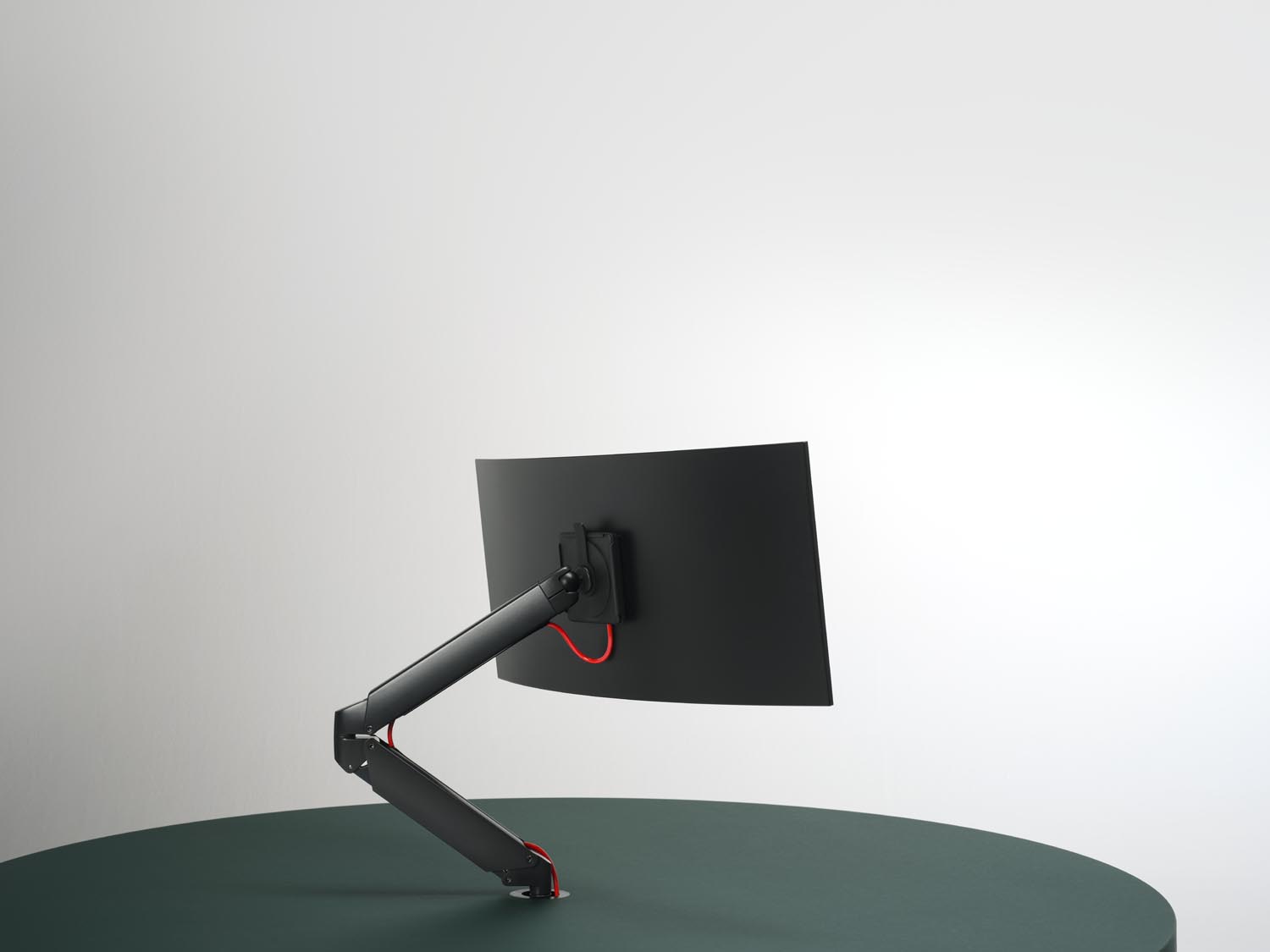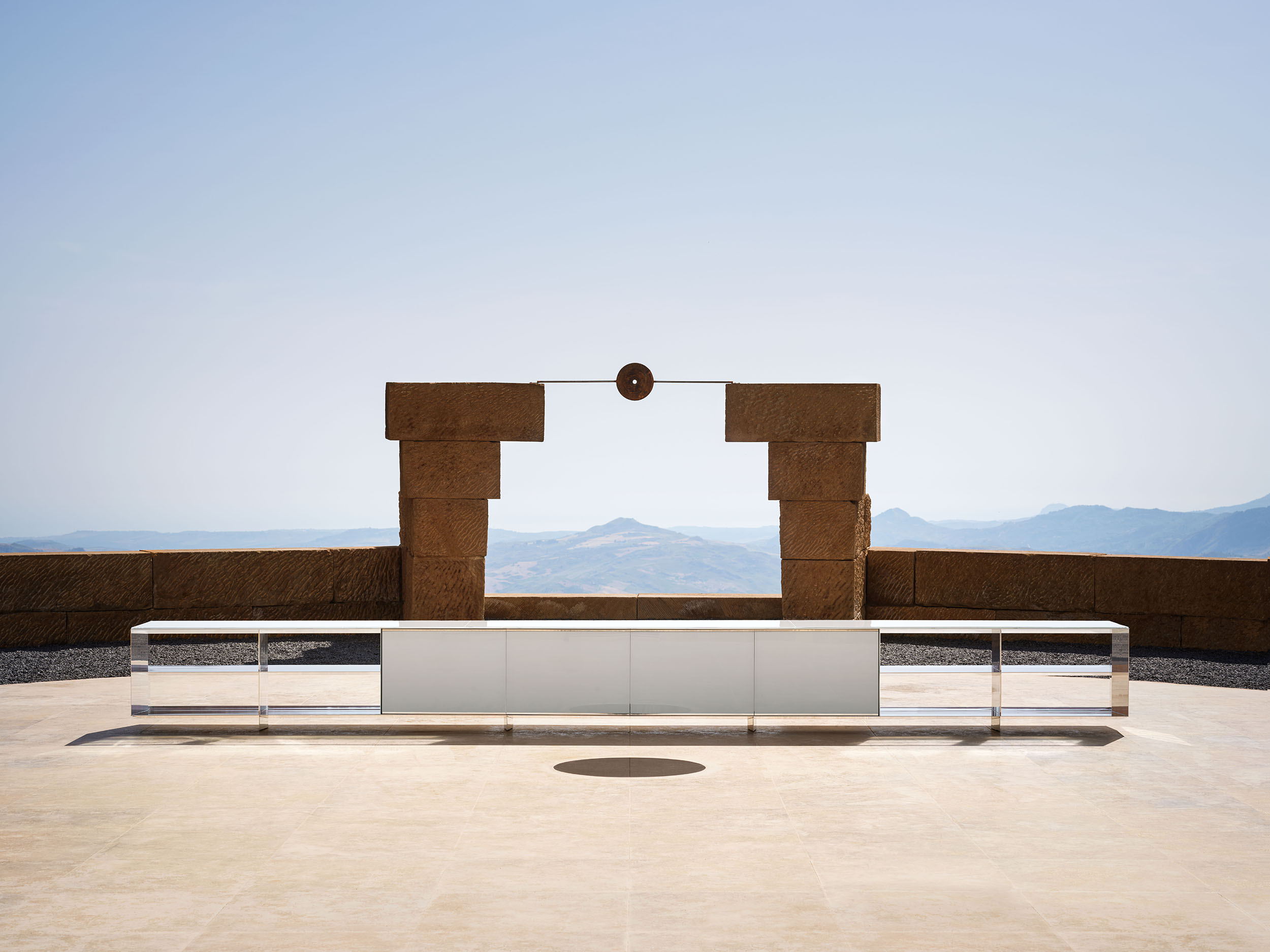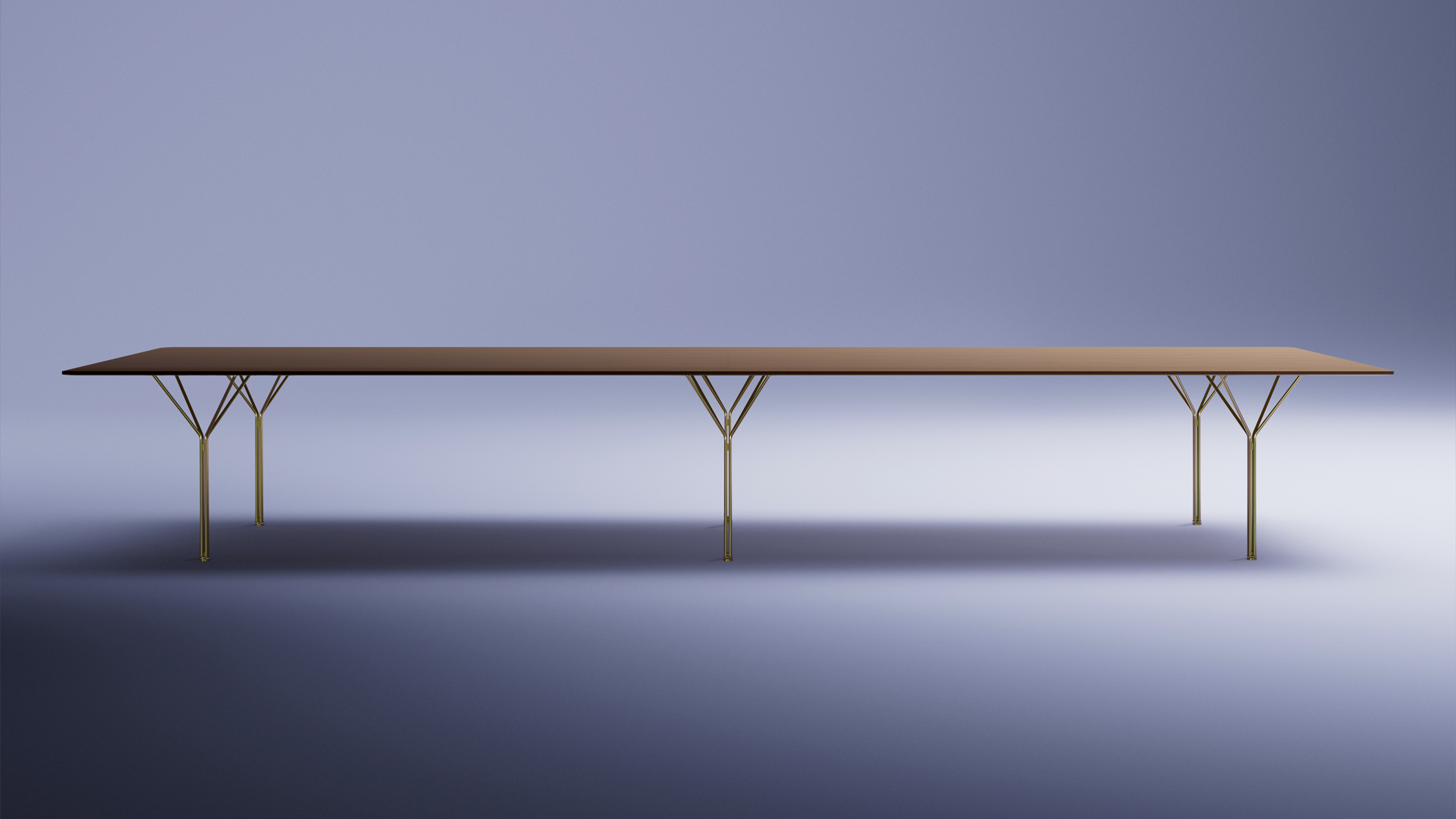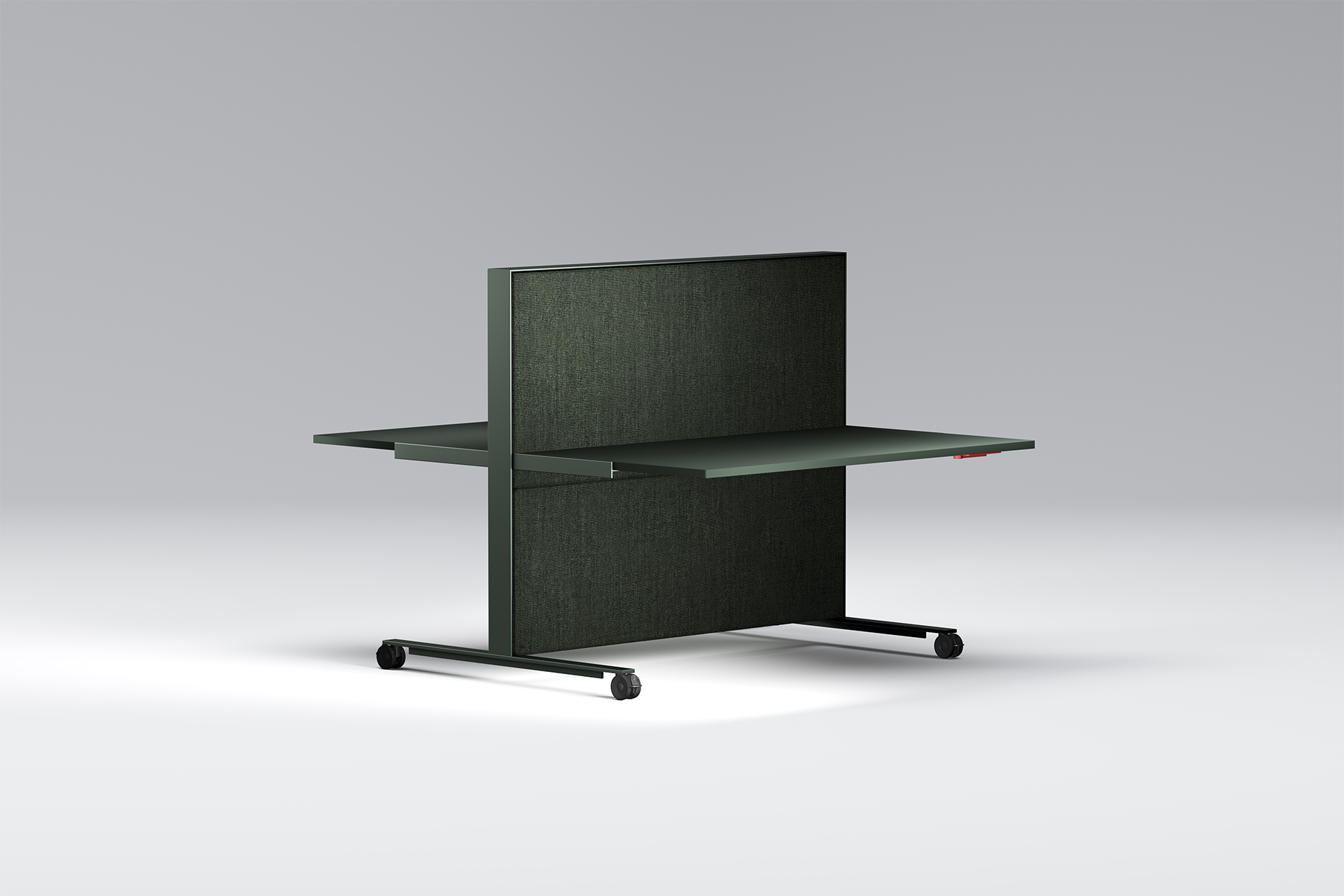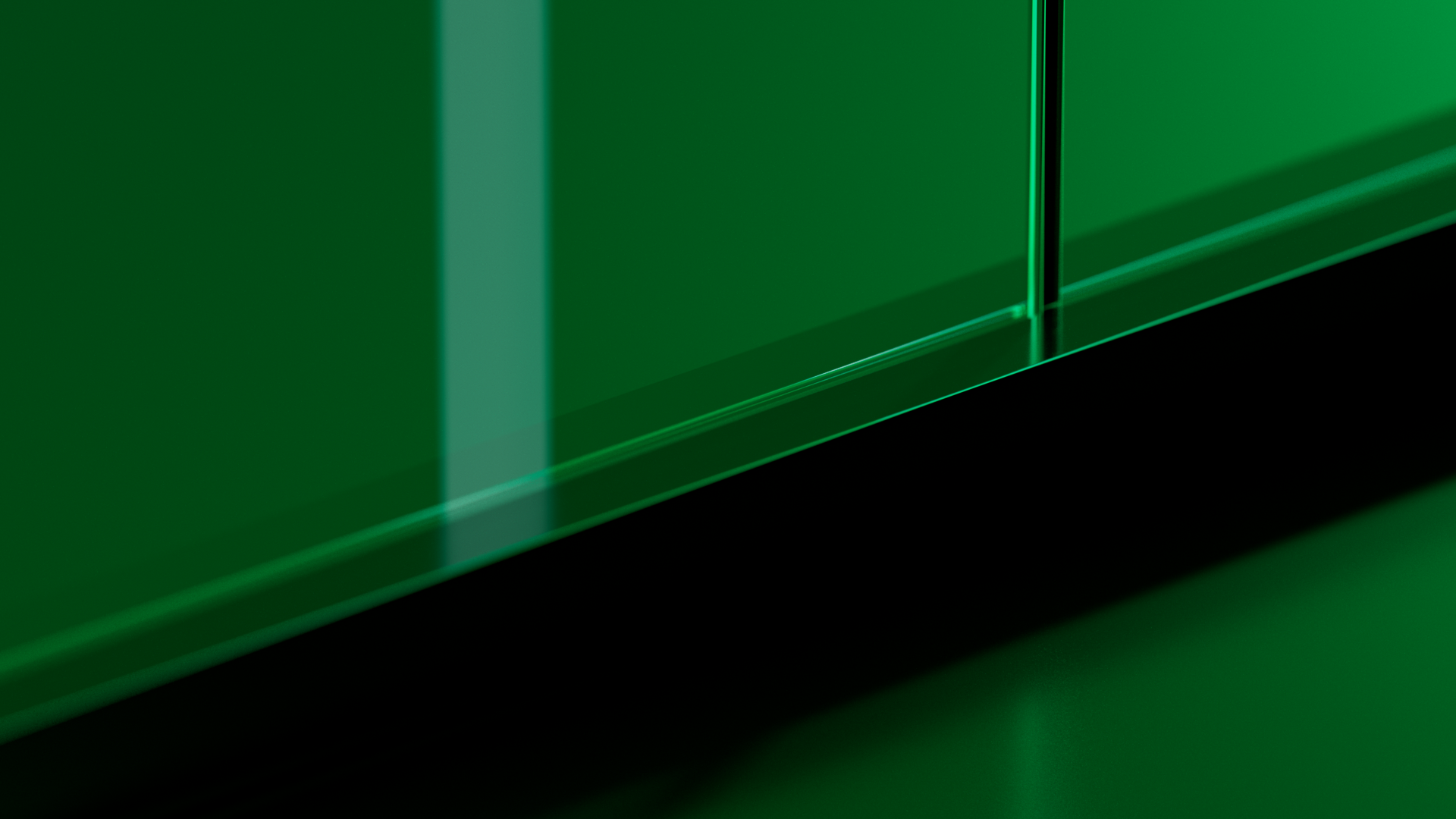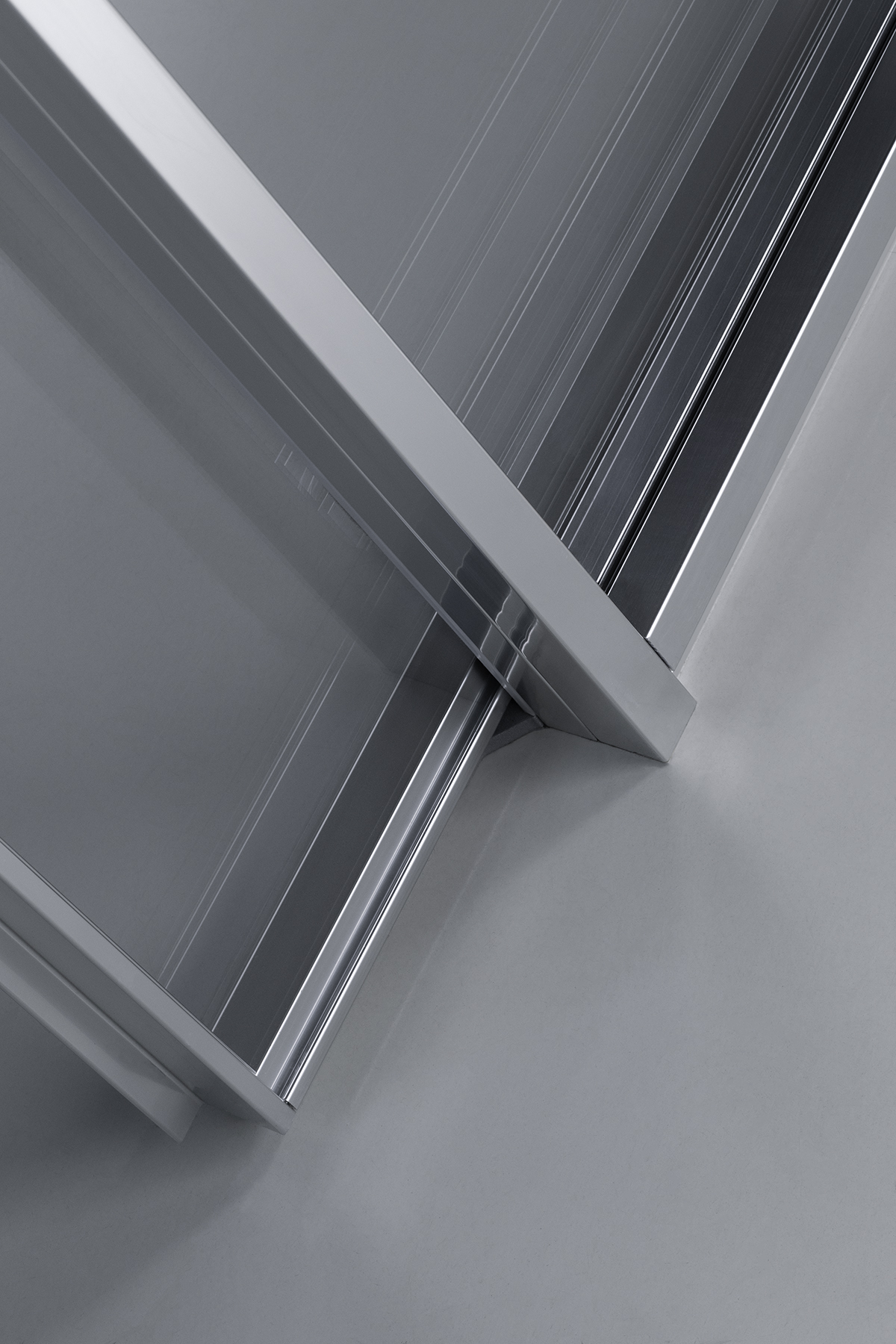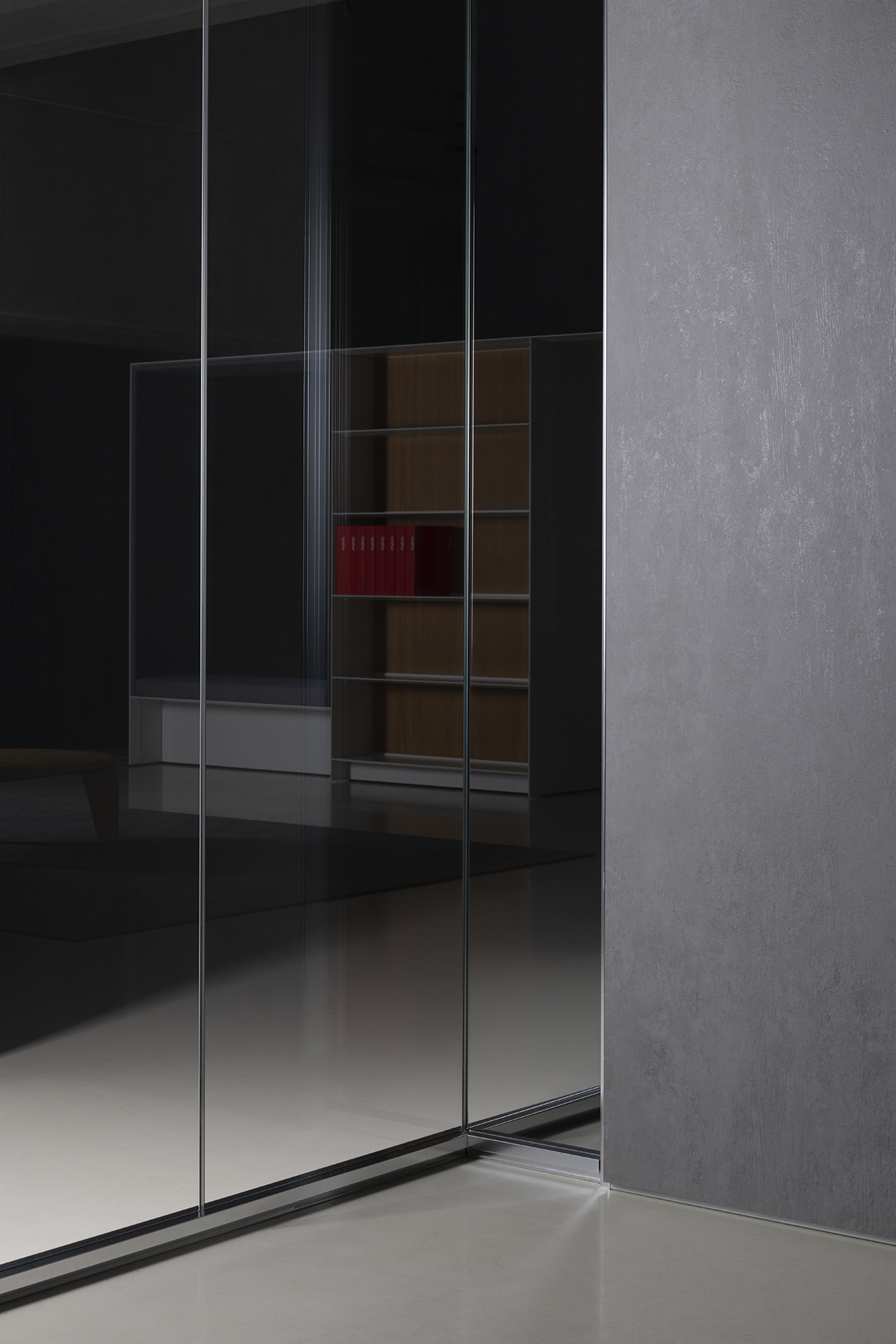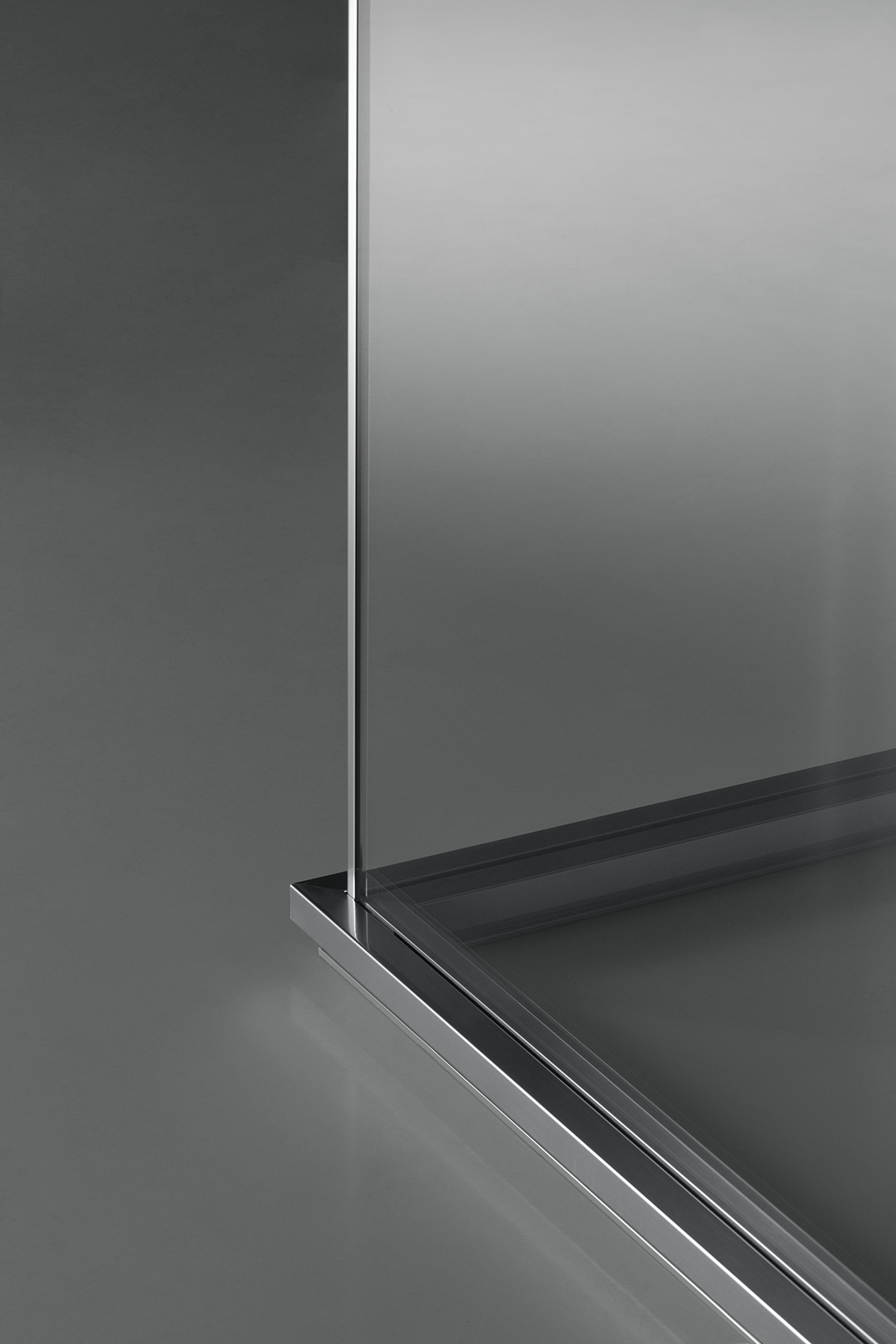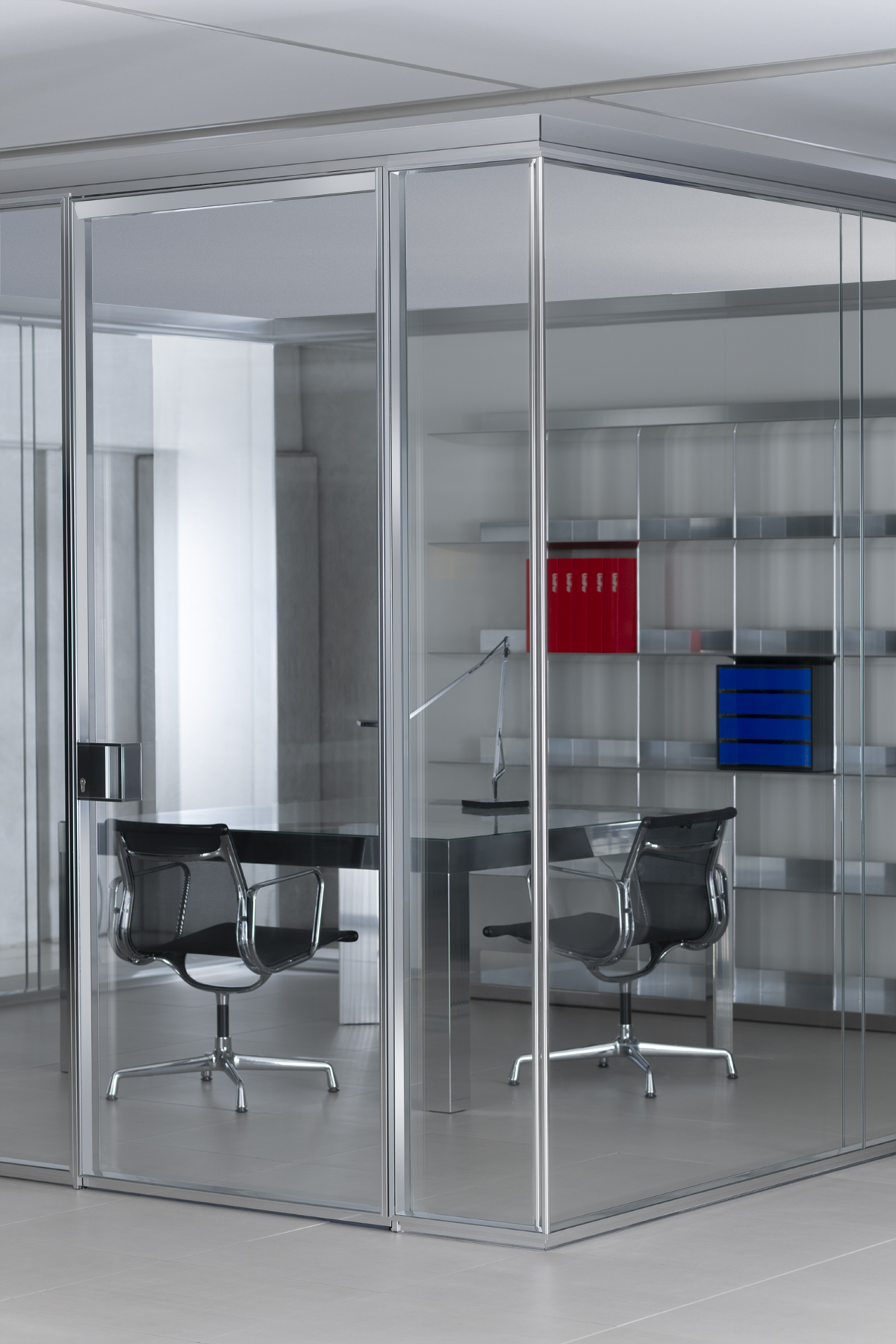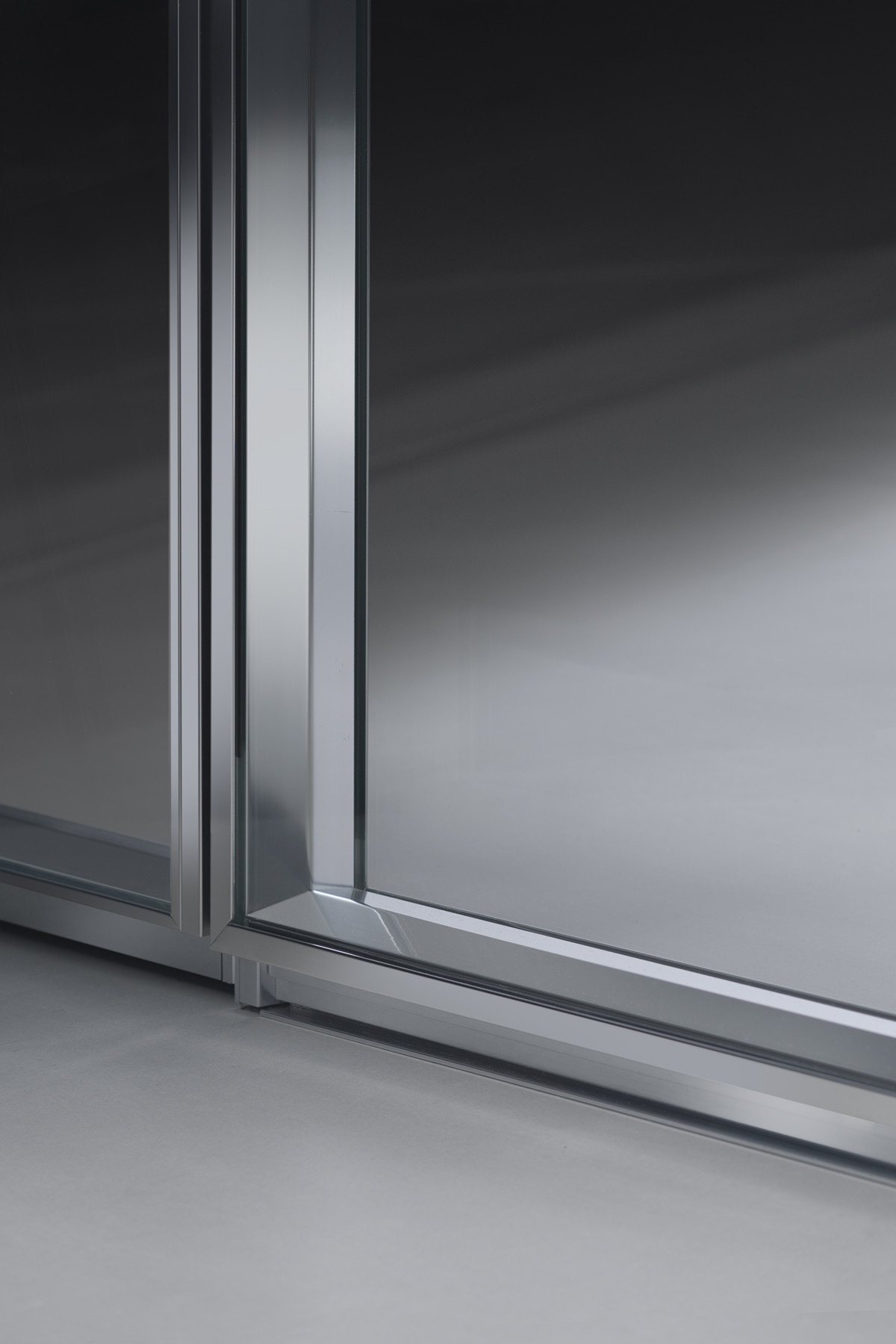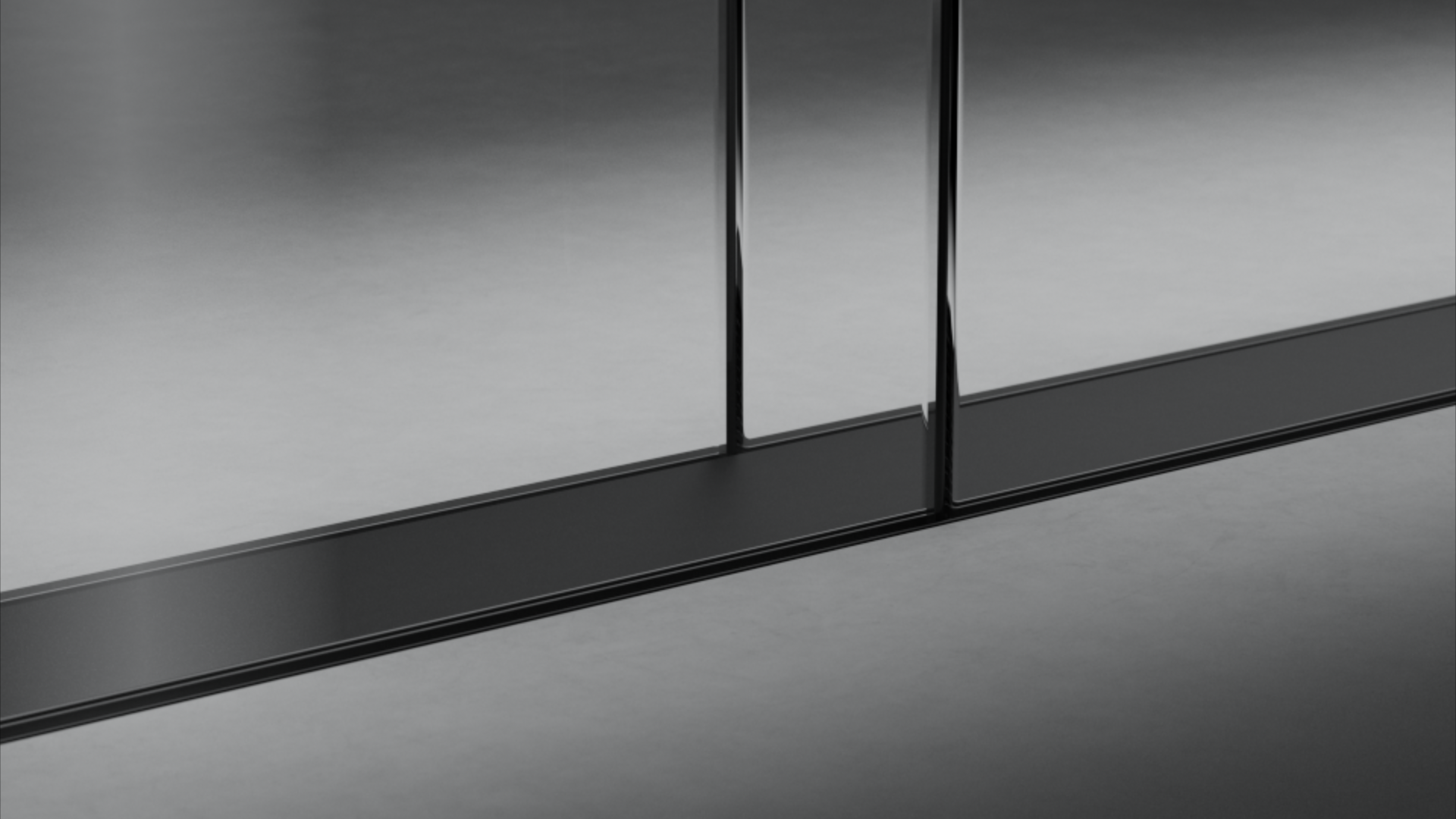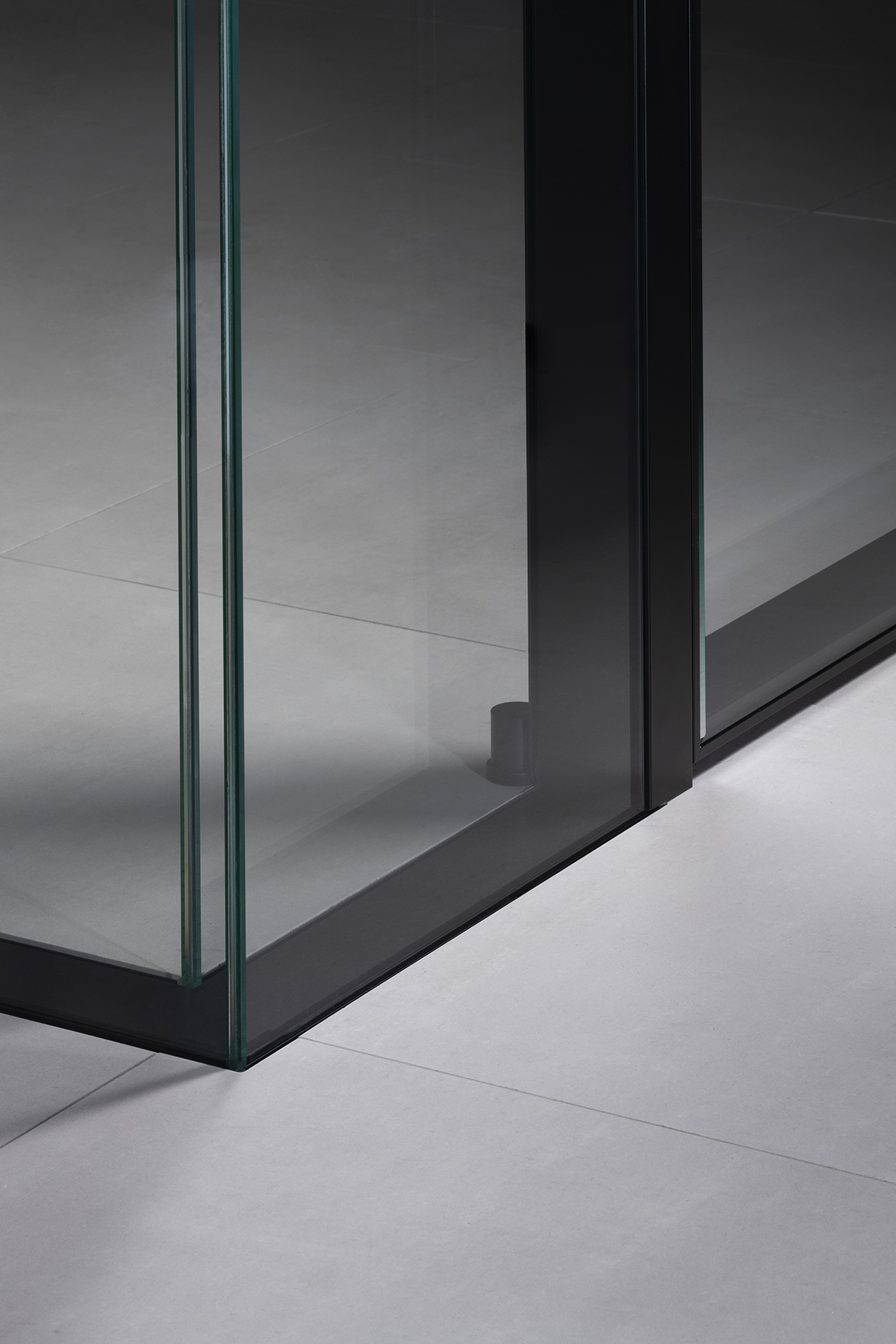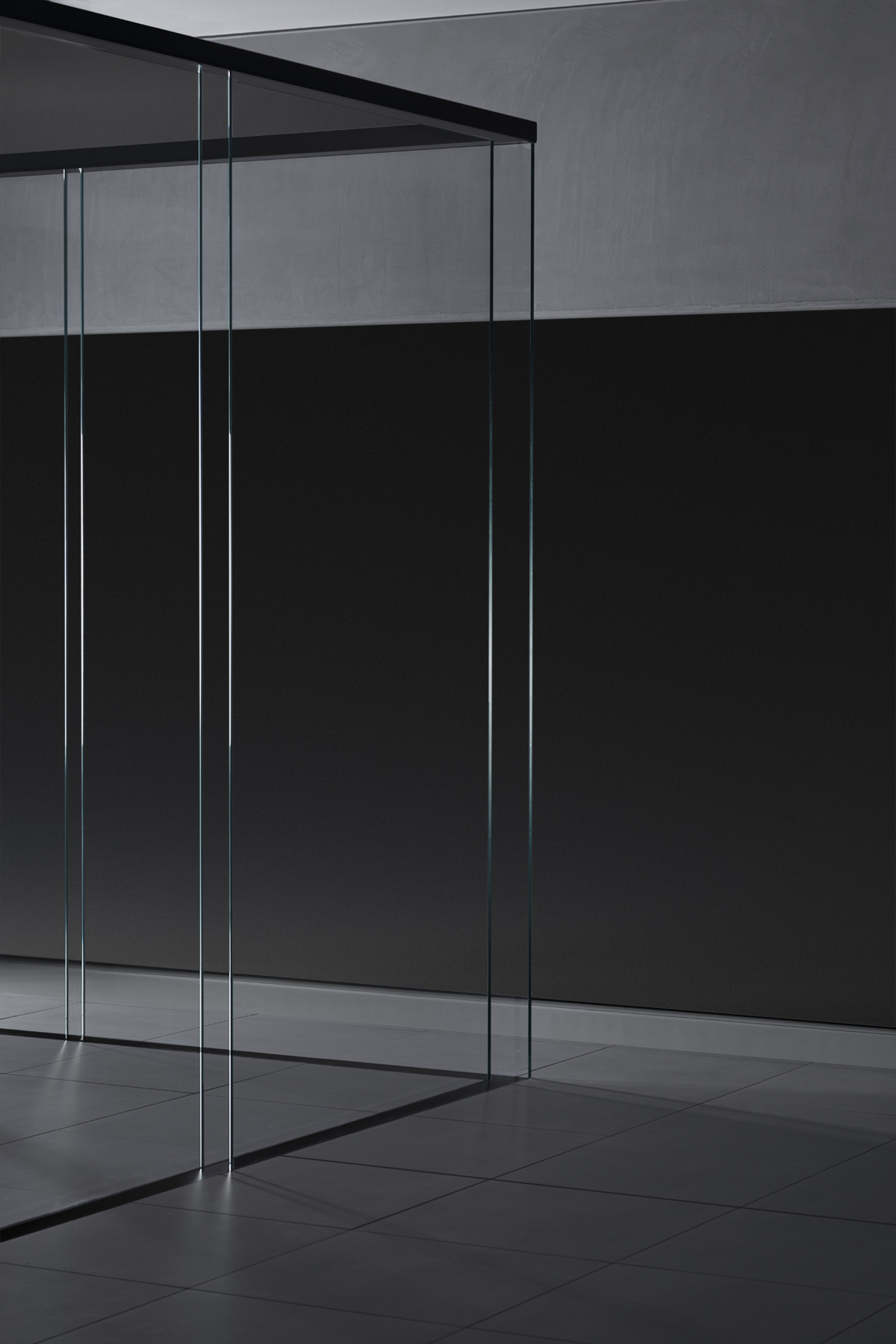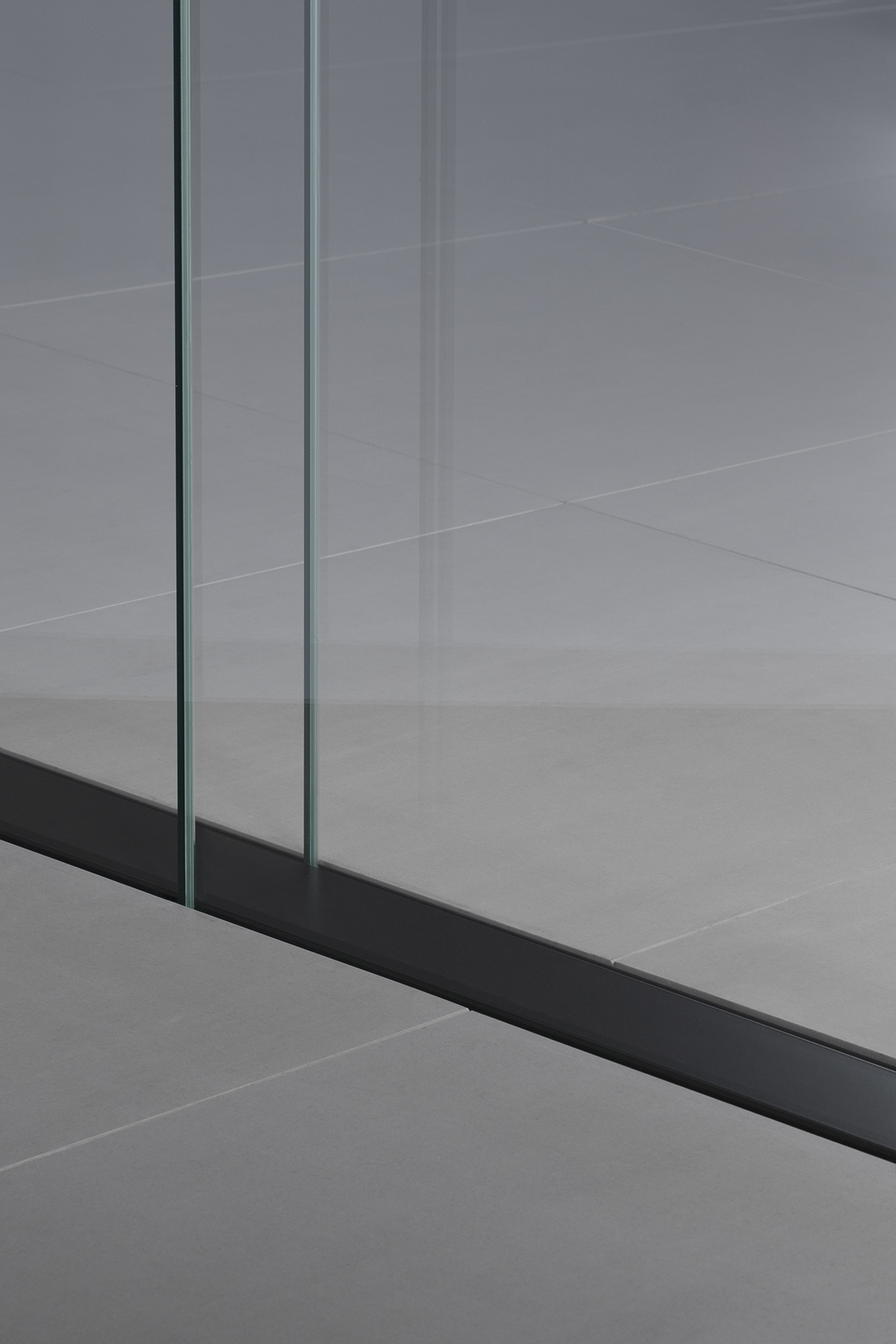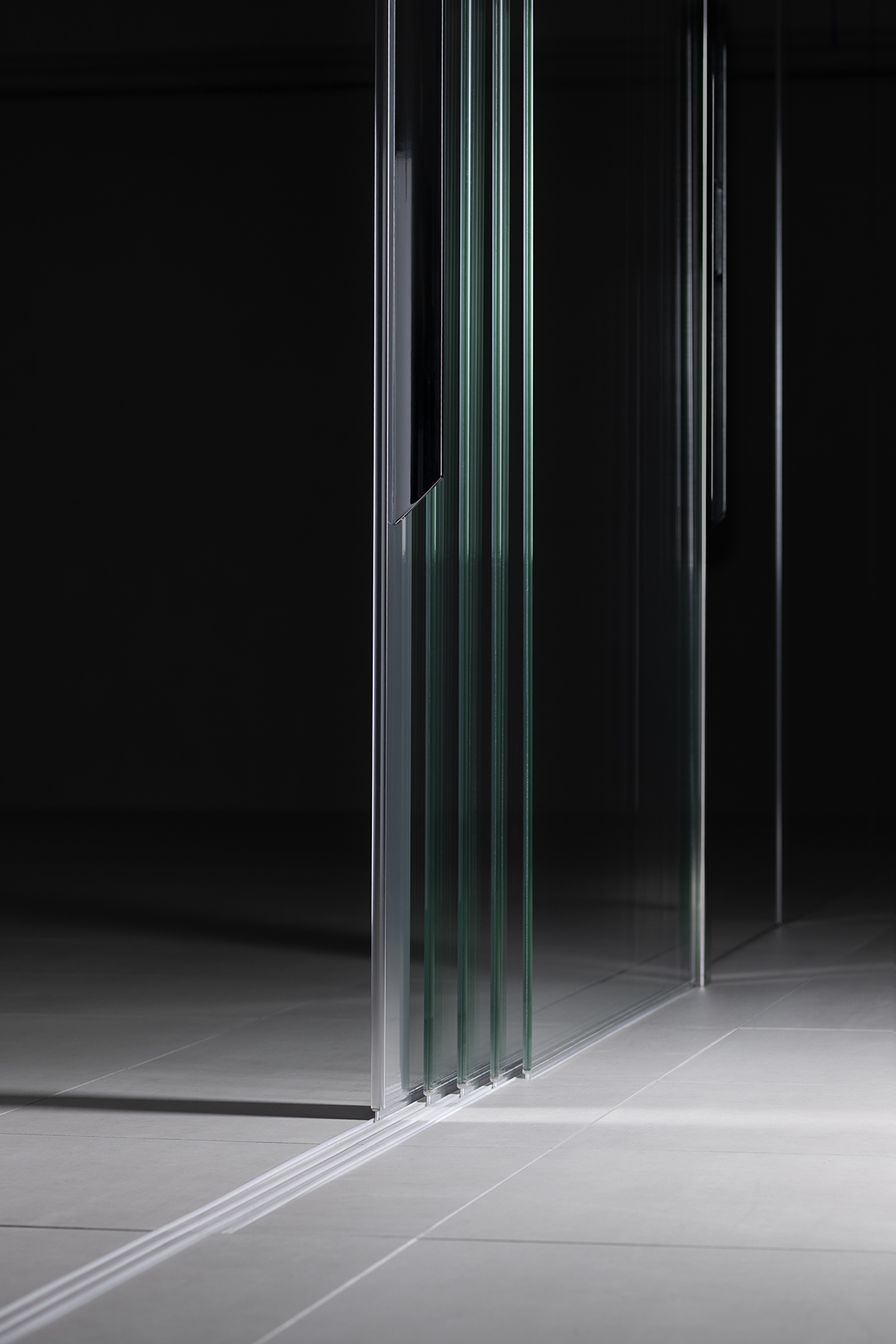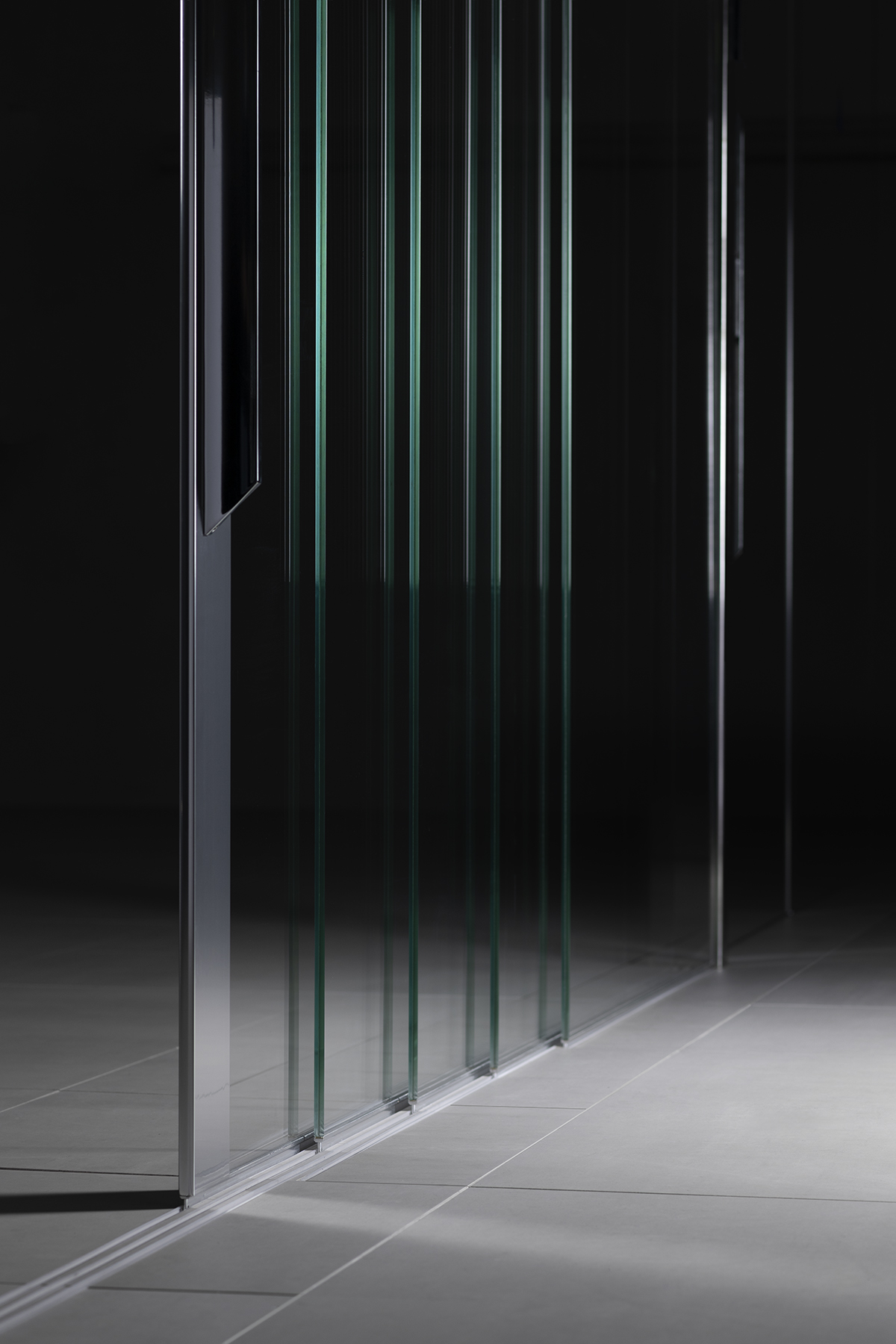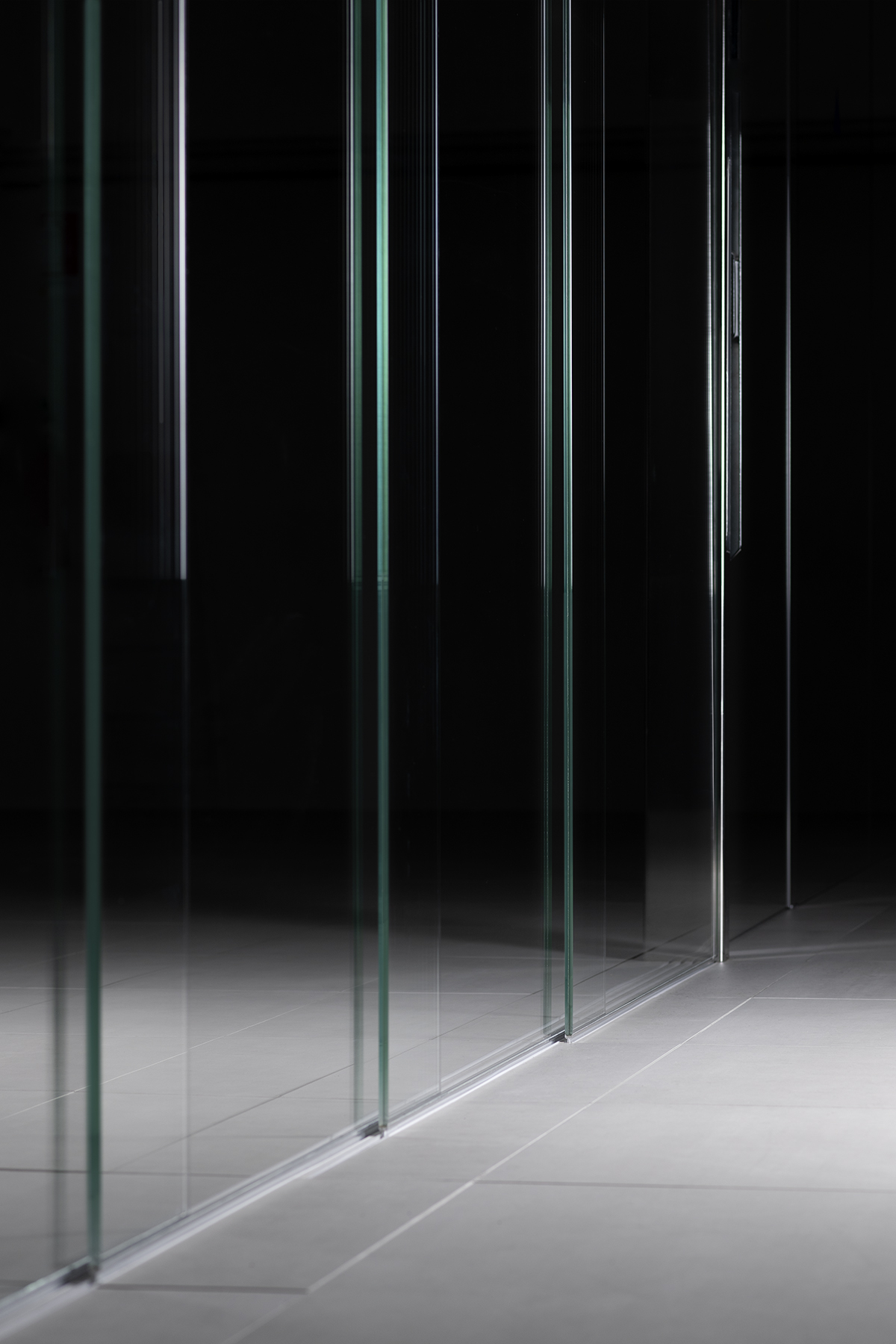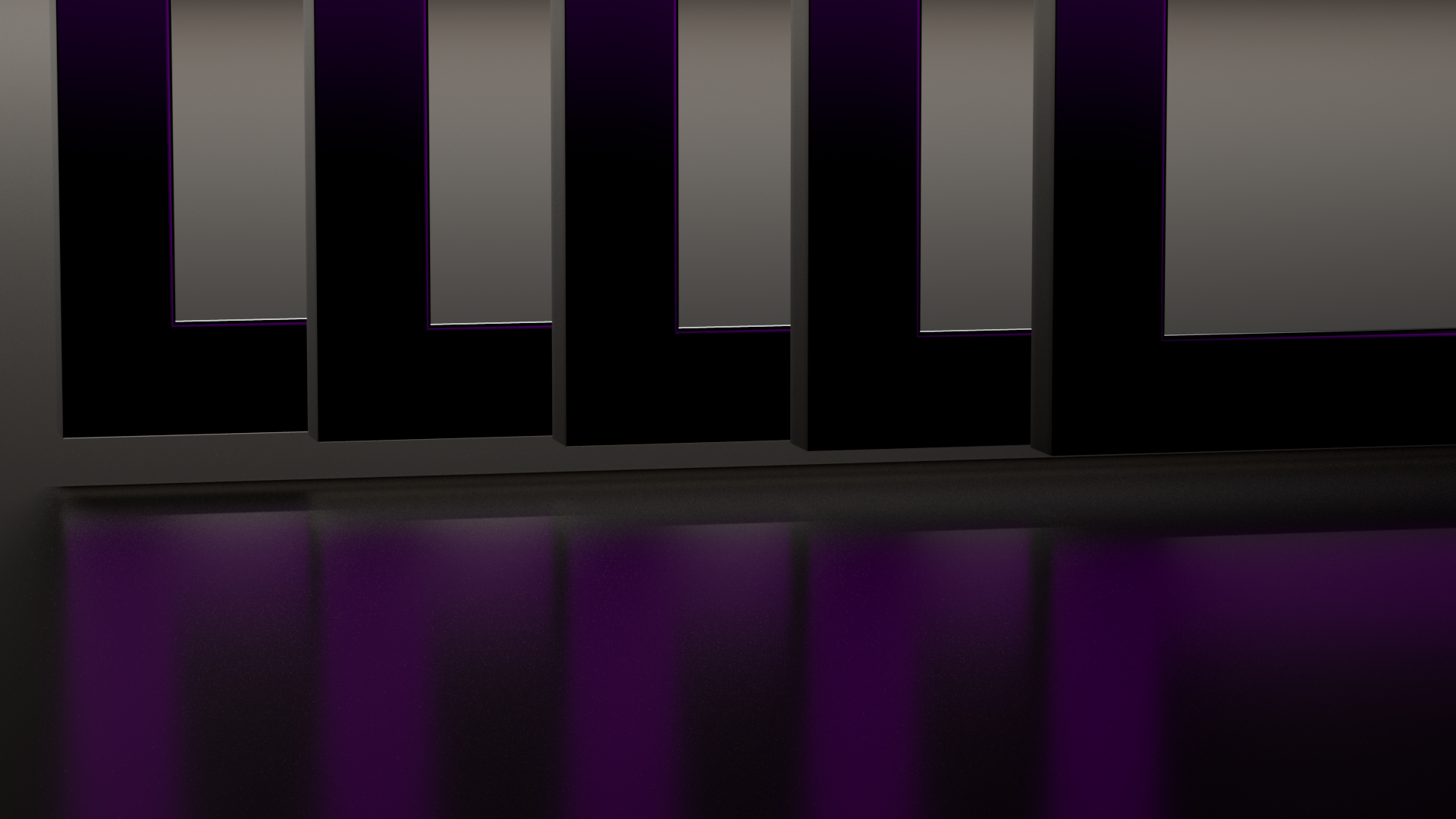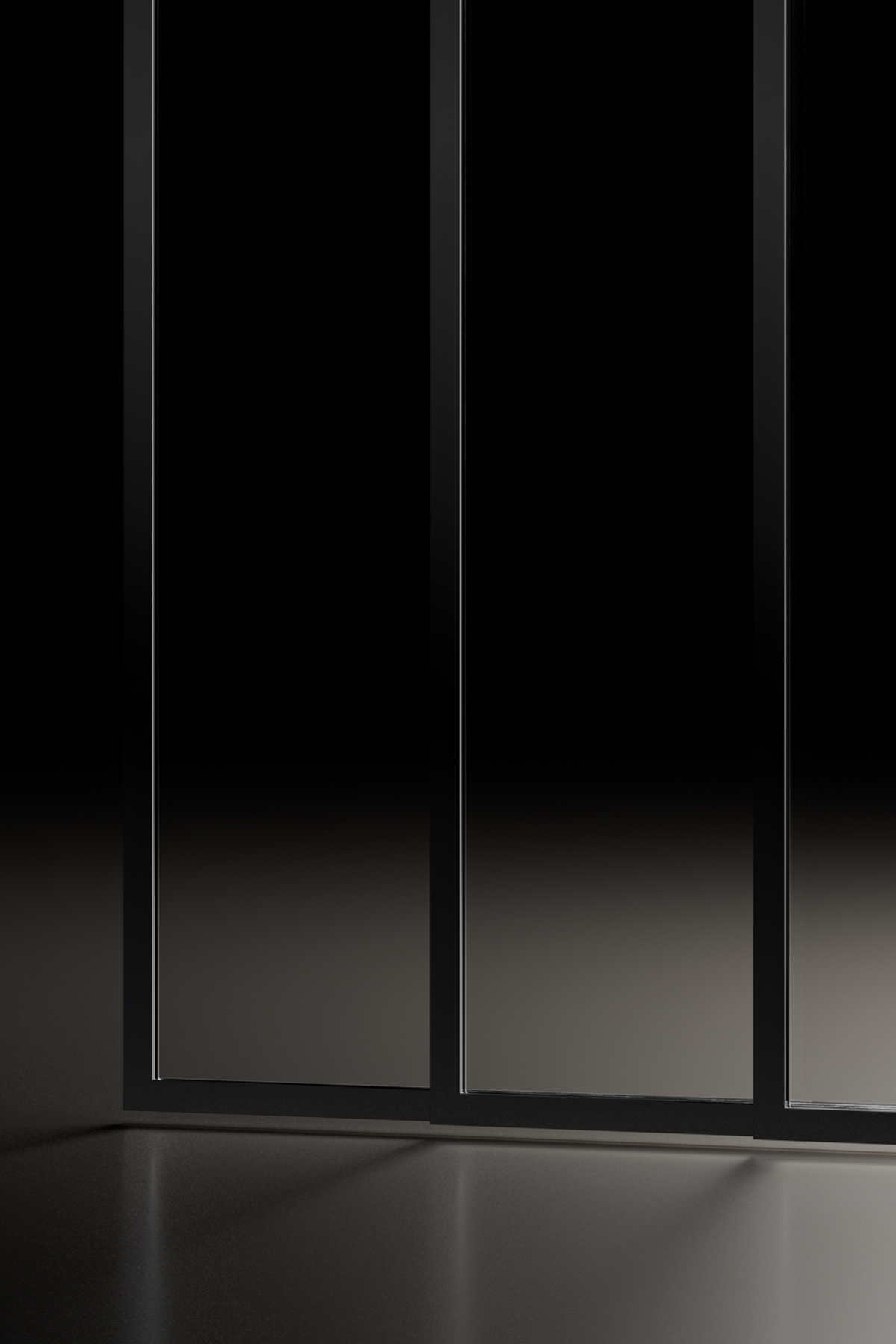
Partition Walls
“I would like to see the return of an element that has often disappeared from offices, namely the wall.”
[Luca Meda]
The non-traditional wall has been a great area of experimentation for UniFor since the 1980s.
Conceived as a generator of spaces, this basic linear element, in combination with just a few others, constitutes the framework of an interior architecture. Imagining the office space as an urban microcosm, Luca Meda designed Progetto 25: the first partition wall system produced by UniFor, capable of providing a sense of order, protection, and structure. Since then, UniFor has been driven to support the creation of architectures within the architecture by means of a variety of partition types.
Together with the architect Andrée Putman, UniFor conceived partition walls that were fluid, transparent, and continuous, leading to the development of the AP partition system.
The research conducted over the years with Renzo Piano resulted in the realization of the RP partition wall system, while inquiries into the flexibility and dynamism of spaces, in collaboration with Studio Cerri & Associati, led to the development of the SC&A system of large sliding doors.
Finally, abstraction, reduction, and visual lightness are the key characteristics of DCA, a partition wall system developed by UniFor in collaboration with the architect David Chipperfield to articulate, in a refined and elegant manner, the connections between the small hubs that create that urban microcosm that is the modern office.
Designed in 2004 by Renzo Piano for the headquarters of Sole 24 Ore, RP is the culmination of a series of thoughts by the architect together with UniFor, focused on the "thin wall" for offices spaces. "Le Mur Mince" project launched in 1985, marked the début of this line of experimentation, focused on enhancing the immaterial qualities of work spaces, including lighting and acoustics.

Characterized by structural rigor and lightness of form, RP is a modular floor-to-ceiling partition system with an extruded aluminum profile structure, solid, single or double glazed completed by solid, single or double glazed swing or sliding doors. Conceived and built to be integrated and extended over time, RP enables the efficient and rational organisation of workspaces, including operative or executive offices, meeting rooms and multifunctional areas.
Designed in 2001 by Andrée Putman specifically for the Paris-based business bank Natexis, AP is a complete, fluid and lightweight partition system featuring elegant profiles, characterised by an original graphic pyramid leitmotif.
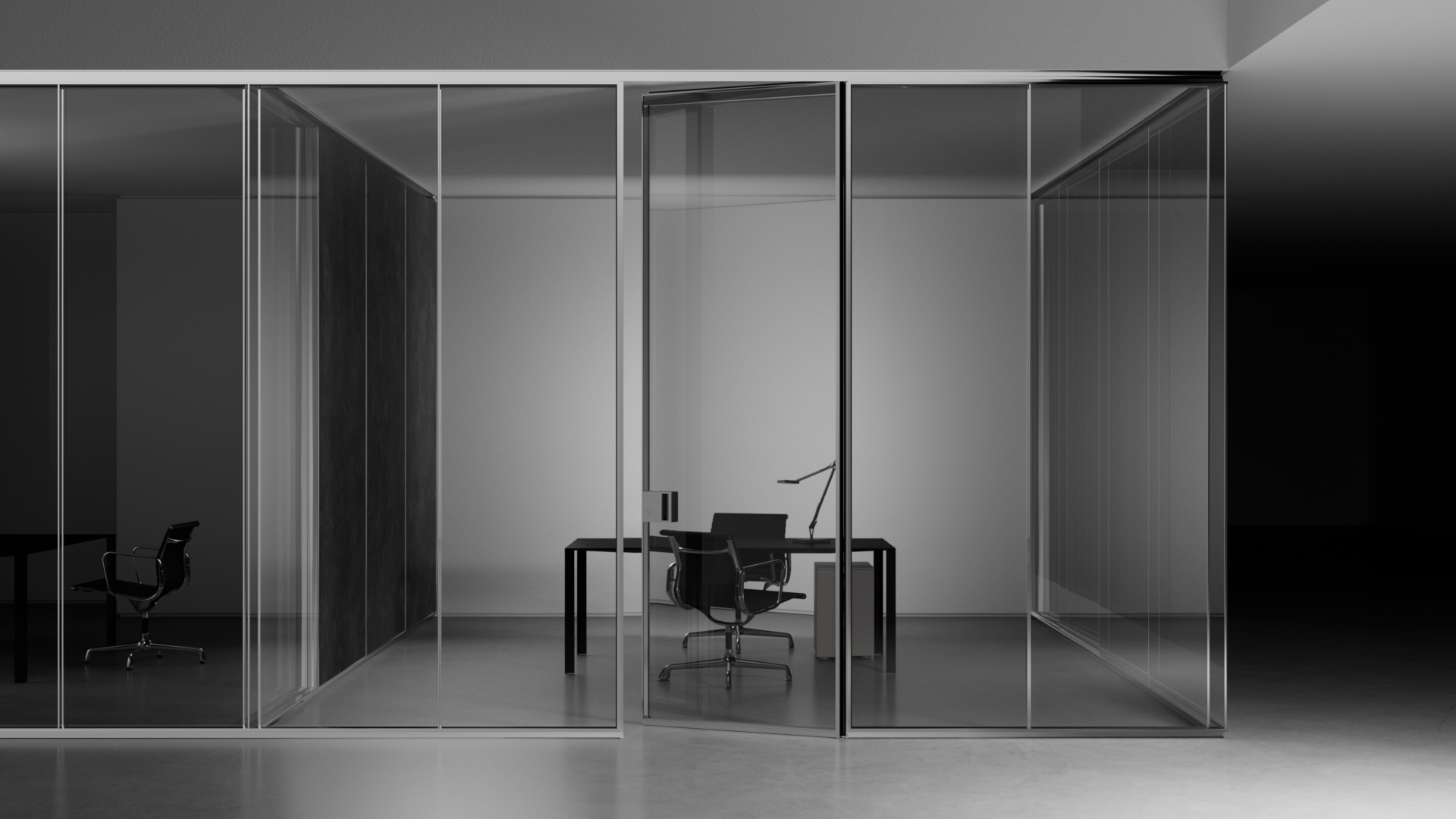
The AP system consists of an extruded aluminium profile structure and continuous solid or glazed panelling. The invisible vertical H-shaped joint makes AP a wall characterised by seamless visual continuity.
Flexible and essential, the system provides high soundproofing performance, enabling the efficient and functional division of workspaces, while also fulfilling all comfort needs for meeting and multifunctional areas with higher privacy requirements.
DCA partition system was developed from a design by David Chipperfield in 2018, in response to the need to separate the collective and individual, formal and informal areas of the Korean cosmetics giant Amorepacific, in an elegant and functional way.
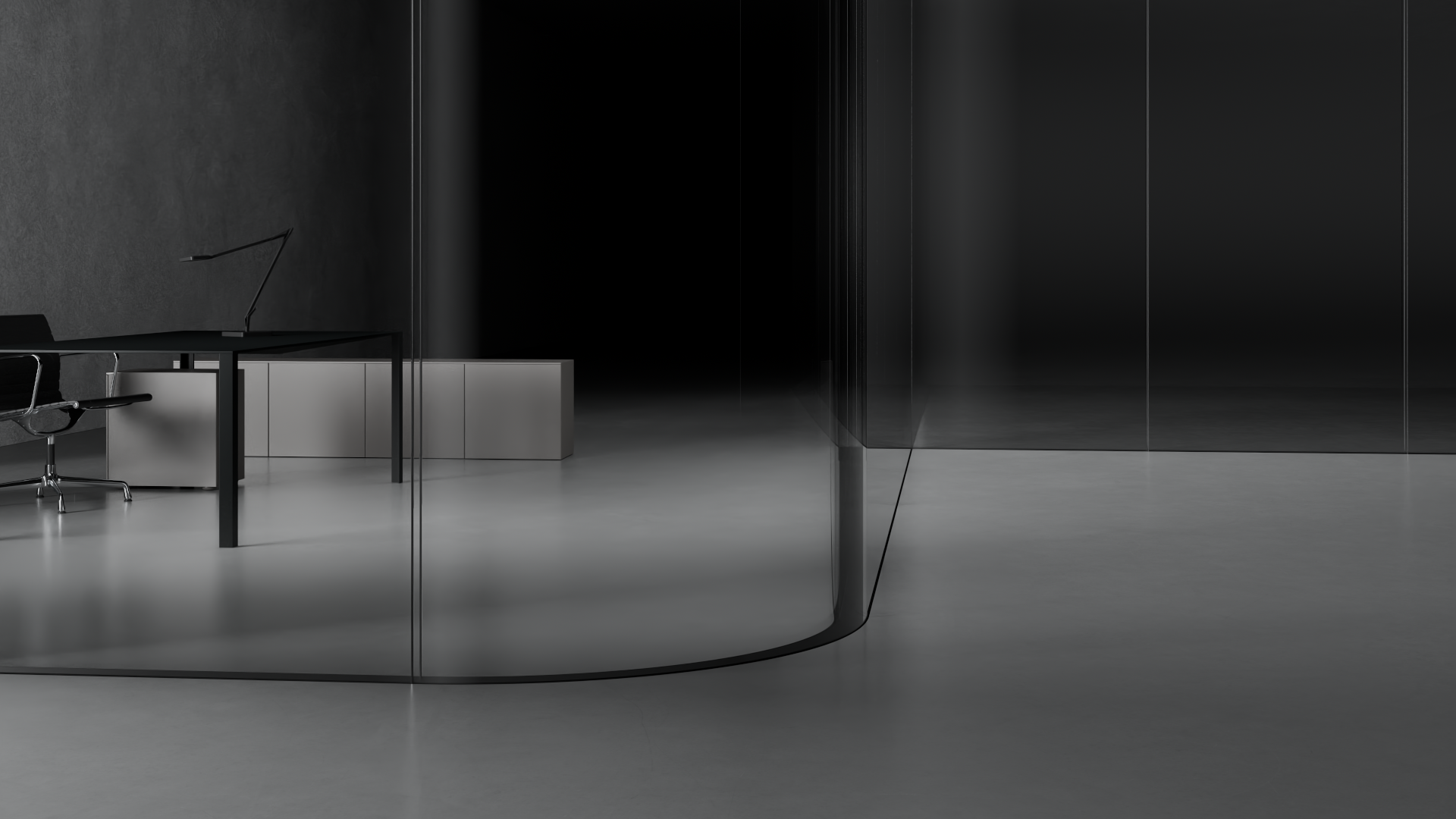
DCA is a modular floor-to-ceiling partition system with an extruded aluminium profile structure, solid, single or double glazed, completed by solid, single or double glaze swing or sliding door.
Profiles can be visible or integrated, within the false ceiling and raised floor.
The system, with its cleaned and elegant design enriches any interior architecture with an immense visual lightness.
Conceived to meet requirements for the smart management of large meeting areas or multifunctional facilities and to enable rapid changes of use, the large sliding doors by UniFor join and separate workspaces in just a few simple moves.
The SC&A and Supersincro sliding folding door systems consist of full height glazed panelling, integrated in flooring and the false ceiling. Both doors contain all mounting elements and sliding devices within the head track integrated in the ceiling.
Designed to conceal its sophisticated operating mechanisms and exalt the fluid gliding of glazed panes, the SC&A sliding door system, designed by Studio Cerri & Associati, defines flexible and permeable work environments that dynamically fulfill all the needs of the contemporary office.

The SC&A sliding door system consists of overlapping sliding panels with a folding closing system. The synchronised operating mechanisms guarantee silent and gradual movements when doors are opened and closed. Characterised by great visual permeability, the system efficiently divides and organises differentiated functional areas, maintaining climate and sound control.
Conceived for the efficient reorganisation of differentiated functional areas, the sliding door system Supersincro is designed by UniFor for the agile conversion of contemporary work spaces.
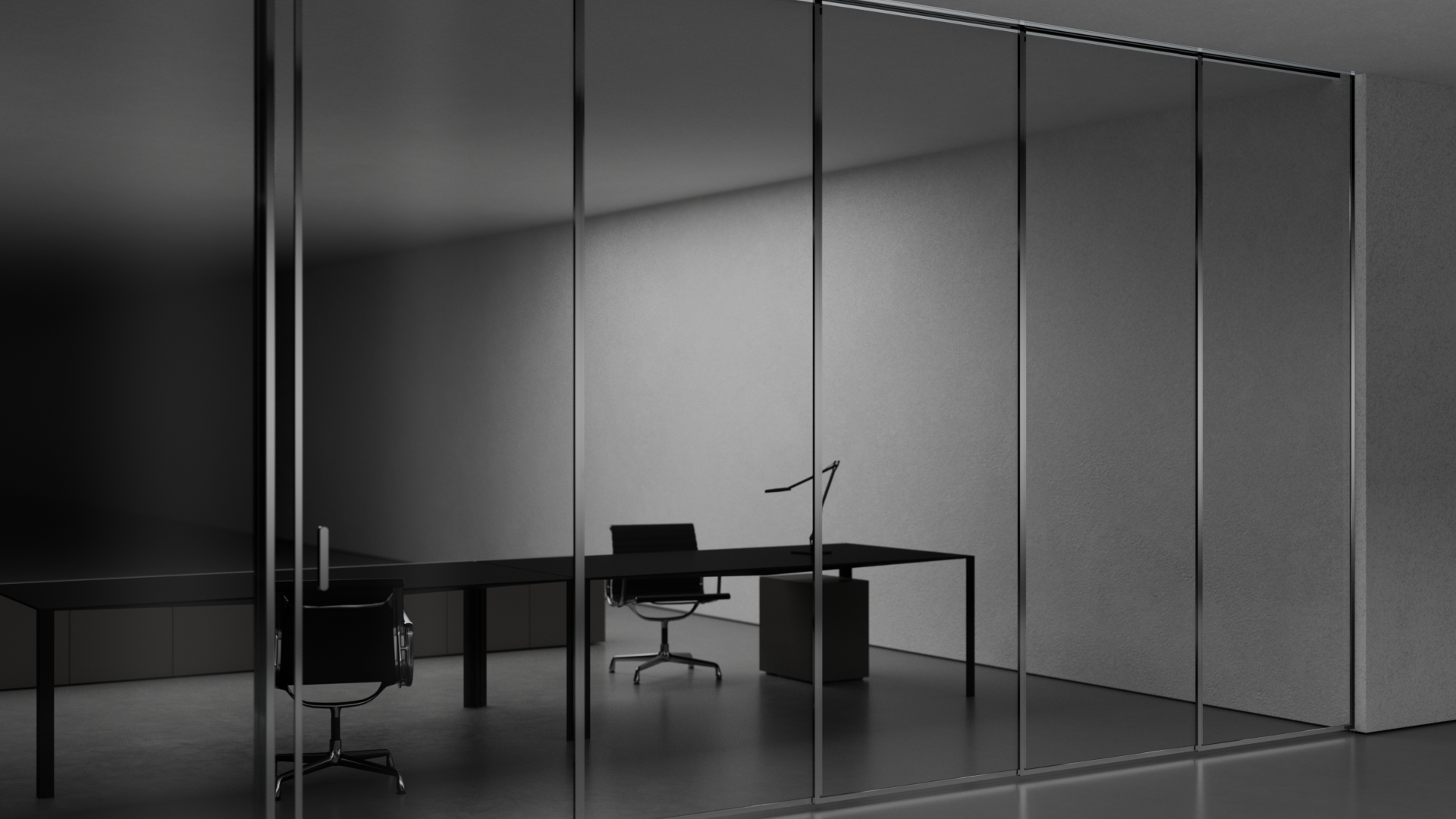
The Supersincro sliding door system consists of a maximum of 5 glazed or solid framed panels, with overlapping synchronised movement and a vertical folding opening.
The extruded aluminium head track of Supersincro is fully built into the ceiling or false ceiling and mounted on structural beams. The built-in sliding mechanism enables synchronised panel movement; its slow-motion system ensures the gradual and silent door opening and closing.
If you are a professional and would like to explore in depth UniFor's Partition Walls systems, fill the form below and you will be contacted by our team of experts.

